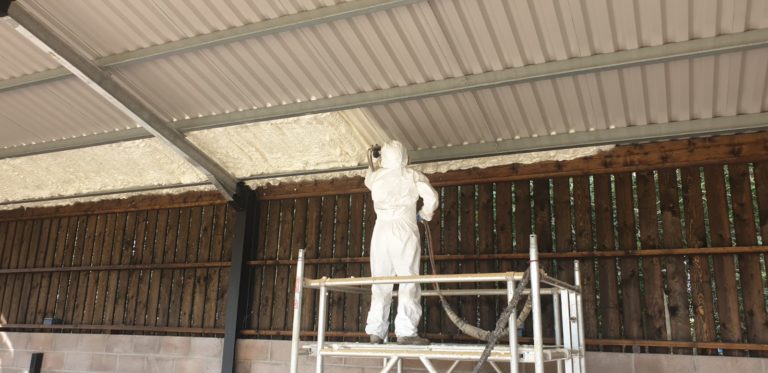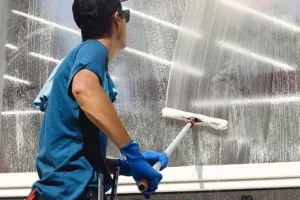How Agricultural Foam Helps Prevent Water Damage in Barns
Water damage in barns causes structural deterioration, promotes mold growth, and threatens stored materials. Agricultural foam prevents this by forming a continuous, waterproof, insulating barrier on barn surfaces. It seals cracks, blocks water infiltration, and controls moisture buildup within the structure. By maintaining dry, stable conditions, agricultural foam preserves the barn’s integrity and extends its lifespan.
This article delivers an in-depth explanation of how agricultural foam prevents water damage in barns. It outlines the different foam types, their technical qualities, real-world applications, and essential decision-making factors to provide a comprehensive understanding without promotional bias.
Agricultural Foam as a Water Damage Solutin in Barns
The primary function of agricultural foam in barns is moisture control through physical sealing and thermal regulation. Barns face multiple sources of water intrusion, including rain, snow, ground seepage, and condensation from humidity inside the barn. Agricultural foam stops these in two key ways:
- Moisture Blockage: Closed-cell foam creates a dense, impermeable barrier that prevents liquid water from penetrating walls, ceilings, and foundations. This keeps wood framing and stored feed dry.
- Condensation Control: Temperature differences between indoor and outdoor air cause moisture to condense on cold surfaces. Foam insulation raises surface temperature and reduces temperature fluctuations, lowering the risk of condensation and associated mold.
The foam expands to fill irregular gaps and voids in the structure. Unlike traditional insulation, foam forms a seamless, continuous layer that eliminates the cracks where water and humid air usually enter.

Types of Agricultural Foam and Their Applications in Barns
Selecting the right foam depends on the barn’s specific moisture challenges and operational needs. Closed-cell and open-cell foams dominate agricultural use, each with distinct properties.
Closed-cell Spray Foam
Closed-cell foam consists of rigid cells filled with gas, creating a high-density layer that is almost impermeable to water and air. It has excellent compressive strength and resists water absorption below 2%. This foam is ideal for barns exposed to heavy moisture, such as dairy barns with frequent washing or barns in regions with high rainfall or snow.
Closed-cell foam offers a high insulating value, typically between R-6 to R-7.5 per inch. It adheres strongly to surfaces, preventing water migration through walls and floors.
Open-cell Spray Foam
Open-cell foam has a softer, spongy texture with cells that are not fully closed. It absorbs some moisture but allows vapor to pass through, making it less effective as a waterproof barrier. It insulates with an R-value around 3.5 to 4 per inch.
This foam suits barns that require breathability for animal health, such as horse stables or poultry houses. It limits drafts and maintains moderate moisture balance but does not fully prevent water infiltration.
Polyurethane Foam Boards
Rigid polyurethane panels provide consistent insulation and water resistance. They are often installed during barn construction as part of the building envelope. They offer a balance of thermal protection and moisture barrier but require precise installation to avoid gaps.
Foam Sealants
One-part foam sealants come in aerosol cans and are applied to localized cracks or joints to block water intrusion. While they don’t provide broad insulation, they are useful for targeted repairs or finishing touches.
Comparison of Agricultural Foam Types for Barn Use
| Foam Type | Water Resistance | Insulation (R-Value/inch) | Ideal Use Case | Installation Method | Cost Estimate |
|---|---|---|---|---|---|
| Closed-cell Spray Foam | Nearly impermeable | 6.0 – 7.5 | High-moisture, washdown barns | Professional spray | Moderate to High |
| Open-cell Spray Foam | Moderate vapor permeable | 3.5 – 4.0 | Ventilated barns, livestock | Professional spray | Low to Moderate |
| Polyurethane Boards | High water resistance | 5.5 – 6.5 | New builds with controlled environment | Panel installation | Moderate |
| Foam Sealants | Localized sealing | N/A | Crack and gap sealing | Hand spray or brush-on | Low |
How Agricultural Foam Functions to Prevent Water Damage
Blocking Water Infiltration
Water intrusion occurs when rain, melting snow, or groundwater penetrates cracks, joints, or porous materials. Even small gaps in a barn’s structure allow moisture entry, which accumulates over time and causes rot or rust.
Agricultural foam expands and hardens inside these gaps, providing a tight, waterproof seal. Closed-cell foam’s dense structure resists water absorption and acts as a vapor barrier. This property is especially valuable in barn foundations or lower walls exposed to groundwater or flooding.
Managing Internal Humidity and Condensation
Moisture from animals’ breath, feed, and stored materials increases barn humidity. When warm moist air contacts cooler surfaces, condensation forms, promoting mold and decay. Agricultural foam increases the temperature of surfaces like walls and ceilings, reducing the temperature differential that causes condensation.
Closed-cell foam’s low vapor permeability prevents moisture vapor migration, keeping interior surfaces dry. Open-cell foam, which allows some vapor transmission, is better suited to barns that require controlled airflow to maintain air quality.
Preserving Structural Materials
Wood framing and metal components degrade quickly in moist environments. Continuous moisture exposure promotes wood rot and metal corrosion, leading to expensive repairs or structural failure.
Agricultural foam protects these materials by maintaining a dry, insulated environment that minimizes moisture contact. This preservation extends the barn’s usable life and reduces maintenance costs.

Technical Specifications for Agricultural Foam in Barns
| Property | Closed-cell Foam | Open-cell Foam | Polyurethane Boards |
|---|---|---|---|
| Water Absorption Rate | <2% | 20–40% | <3% |
| Compressive Strength | 25–60 psi | 5–10 psi | 20–30 psi |
| Vapor Permeability | 0.5 perms (low) | 10 perms (high) | 1.5 perms (low) |
| Insulation Value (R/inch) | 6.0–7.5 | 3.5–4.0 | 5.5–6.5 |
| Lifespan Installed | 25–35 years | 10–20 years | 20–30 years |
| Fire Resistance Rating | ASTM E84 Class 1 | ASTM E84 Class 1 | Varies by thickness |
The closed-cell foam’s combination of low permeability and high compressive strength makes it the most durable water barrier for barns exposed to wet conditions.
Considerations Before Choosing Agricultural Foam
Barn Usage and Moisture Levels
Assess the barn’s function and typical moisture exposure. High-humidity environments or barns washed down regularly demand closed-cell foam for full protection. For barns housing animals that need ventilation, such as horses or poultry, open-cell foam might be preferable to avoid trapping moisture inside.
Surface Conditions and Installation Feasibility
Spray foams adapt well to uneven, rough surfaces and fill small voids, making them effective for older barns or retrofits. Board insulation requires smooth, flat surfaces and precise fitting, often better for new constructions.
Budget vs Long-term Value
Closed-cell foam costs more initially but reduces repair and maintenance expenses caused by water damage. Open-cell foam is less expensive but offers less protection from liquid water.
Climate Factors
Evaluate local rainfall, humidity, and temperature ranges. Barns in cold climates with snow risk need foam that prevents freeze-thaw damage and condensation. In warm, humid climates, vapor permeability is critical to avoid trapped moisture.
Market Insights
Recent market studies show growing adoption of agricultural foam as farmers and builders prioritize barn longevity and material protection. A 2023 AgriBuild Research report found that barns insulated with spray foam experienced up to 30% fewer structural repairs related to moisture damage over a decade compared to traditional insulated barns. Adoption rates of foam insulation in new barn construction reached nearly 70% in North America, highlighting its proven effectiveness.
Common Questions About Agricultural Foam in Barns
How long does agricultural foam last once installed? Properly applied closed-cell foam can last 30 years or more, resisting water and mold damage. Open-cell foam has a shorter lifespan, typically 10–20 years depending on environmental exposure.
Can agricultural foam be applied during winter? Yes. Special winter-grade foams and heated equipment allow foam application at temperatures below freezing. Cold weather installation requires professional expertise to ensure proper curing.
Is agricultural foam safe for animals? Once cured, foam is inert and safe. Proper ventilation during installation minimizes exposure to chemicals.
Will foam insulation prevent all water leaks? No. Foam significantly reduces water entry but must be combined with good roofing, gutters, and foundation drainage to prevent leaks.
Does foam insulation require ventilation? Yes. Foam works with ventilation systems to control barn humidity and air quality, not replace them.
Make the Right Decision
Agricultural foam offers an effective, long-term solution to water damage in barns. Closed-cell spray foam provides the strongest moisture barrier and insulation, protecting structures in high-moisture conditions. Open-cell foam suits barns that prioritize ventilation. Polyurethane boards work well for new constructions needing uniform insulation.
Carefully assess your barn’s moisture levels, ventilation needs, surface conditions, and budget. Choose foam types and installation methods aligned with your barn’s use and local climate. Prioritize quality application to maximize moisture control and structural protection.
Agricultural foam preserves barn investments by preventing rot, mold, and corrosion, improving durability and reducing maintenance costs over time.
Reviewer: Maria Lopez offered detailed feedback after reviewing this post. Her 10 years of experience in spray foam work helped guide the tone and suggestions toward realistic strategies.












